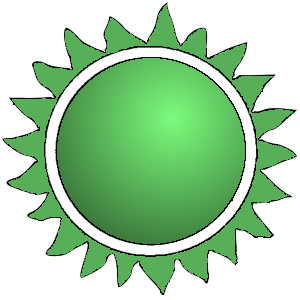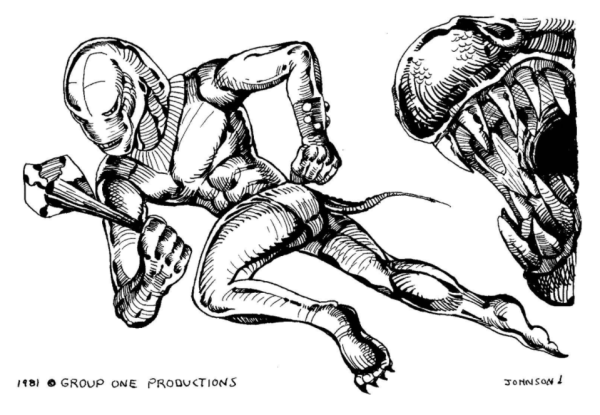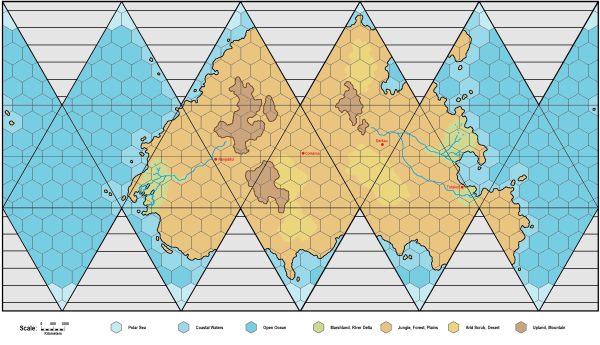Trist
| Trist | |||||||||||||||||||||||||
|---|---|---|---|---|---|---|---|---|---|---|---|---|---|---|---|---|---|---|---|---|---|---|---|---|---|
 Minor Race | |||||||||||||||||||||||||
| Base Information | |||||||||||||||||||||||||
| Classification | Omnivore/hunter | ||||||||||||||||||||||||
| Status | Minor Race | ||||||||||||||||||||||||
| Locomotion | Walker | ||||||||||||||||||||||||
| Terrain | Forest, Plains | ||||||||||||||||||||||||
| Body Form | |||||||||||||||||||||||||
| Confluence | Humanoid | ||||||||||||||||||||||||
| Bio-Identenoid | Reptillianoid | ||||||||||||||||||||||||
| Size | 2.5-3 meters | ||||||||||||||||||||||||
| Weight | 150 kg | ||||||||||||||||||||||||
| Culture | |||||||||||||||||||||||||
| Languages | Native Language | ||||||||||||||||||||||||
| Social Structure | Tribal Society | ||||||||||||||||||||||||
| Technological Epoch | TL:1-3 | ||||||||||||||||||||||||
| Psionic potential | Standard | ||||||||||||||||||||||||
| Origin World | |||||||||||||||||||||||||
| Homeworld location | Wabor-Parn (Theta Borealis 2903) | ||||||||||||||||||||||||
| UWP | E545420-5
| ||||||||||||||||||||||||
| Primary Star | M2 V | ||||||||||||||||||||||||
| Atmosphere | Thin (tainted) | ||||||||||||||||||||||||
| Off-world presence | No | ||||||||||||||||||||||||
| Zoetic individuals | Yes | ||||||||||||||||||||||||
| Source | |||||||||||||||||||||||||
| Reference | Wabor-Parn 8. | ||||||||||||||||||||||||
| Canon | No | ||||||||||||||||||||||||
| Also see | Bose | ||||||||||||||||||||||||
The Trist are a sophont species native to Wabor-Parn (Theta Borealis 2903).
- They are a Minor Non-Human Race with a generally humanoid appearance.
- They share their homeworld with the Bose.
- The Trist and the Bose have a common ancestor species.
Description (Specifications)
The Trist are tall and slender and display a bilateral symmetry. They have a humanoid body shape, with two arms, two legs, a residual tail, a torso, and a head mounting the major sensory organs. Coloration is typically mottled red-brown with paler bellies, though some isolated tribes have blue or green coloring. Some Trist may have hair on their backs and limbs. An average Trist is larger than a human, with a height of around 2.5–3 meters and a typical weight of 150 kg. Size and weight are based on the proportions of females, who form the majority of the population: males are substantially taller and heavier.
- Trist have a body profile of Bilateral HBS-T-AN-LN-T, internal skeleton, blood fluids, skin exterior.
- Trist have immense strength and endurance.
The known population of Trist numbers some 10,000 individuals. Should disaster overtake them, they face the very real danger of becoming extinct.
Respiration
Trist employ a conventional respiration cycle consisting of an oxygen-nitrogen inhalant and a carbon dioxide exhalant.
- Trist evolved in a thin atmosphere and find pressures of 430–700 millibars ideal.
Senses
Trist vision is similar to humans in terms of sharpness. Color perception is centered on a wavelength of 890 nm (the peak wavelength of their star), which corresponds to the near infrared end of the EM spectrum.
- Trist see well in conditions humans consider gloomy or dark.
- Trist find preferred human levels of lighting to be uncomfortably bright.
- Hearing, sensitivity to volatiles (smell and taste), and sensitivity to pressure and texture (touch) are broadly equivalent to those of humans.
Diet
Trist have a preference for a carnivorous diet, often consuming live prey, but can comfortably survive on roots, berries, and other plant produce.
- Males typically fulfil a hunter role within society, tasked with taking large game. They are also the defenders of the tribe.
- Females, the elderly and the young undertake gathering (including plant material and unresisting prey such as insects) and are responsible for food preparation.
Reproduction
There are two genders (male and female). Females form the largest percentage of the population, outnumbering males by a ratio of 3:1.
- Trist are oviparous. Eggs are incubated by females and the young are raised communally.
- Females only become gravid under specific local environmental conditions: population growth is slow.
Psychology
Trist psychology is driven by factors common to many sophonts:
- Acquisition (stemming from the need to gather adequate nutrition),
- Preservation (derived from the need to continue their personal existence), and
- Perpetuation (the urge to continue the species).
History & Background (Dossier)
The primal ancestors of the Trist evolved around 2 million years ago. Prior to human contact (around -2100) their population was approximately 55 million. They lived in large tribal groups and had a level of advancement equivalent to TL–0.
Their tech level climbed following human contact, reaching a peak of TL–2 during the Long Night. This coincided with a long period of unusual environmental conditions on Wabor-Parn that triggered the female ability to reproduce: Trist numbers grew exponentially, exceeding 250 million and causing internecine warfare and large-scale migrations as resources became scarce. Their society devolved into vast hordes of allied tribes, led by charismatic warriors, that endlessly raided and plundered in their struggle for survival and dominance.
The race suffered extinction-level casualties in a global war that occurred sometime around -300.
- It seems likely that the extinction war was fought against the Bose.
- It is believed the Bose employed targeted bioweapons. These failed to work as anticipated, with catastrophic consequences.
- The few thousand individuals that remain are descended from the survivors.
- The war left the world's atmosphere permanently tainted by microscopic biological pathogens.
- The current Trist population are completely immune to any lingering effects.
- Other native flora and fauna was not noticeably affected.
Rumors persist of as-yet uncontacted tribes of Trist, descended from survivors of the extinction war, inhabiting the deep wildernesses of the world. If true, there could be many thousands more Trist than current surveys indicate.
Government
Trist society is divided into tribes which themselves are allied into larger clans. Tribes typically number between 50 and 100 individuals. Leadership is hereditary, though under certain circumstances leadership may be passed to individuals from outside of the traditional ruling circle.
- Tribes are matriarchal, led by a Chieftess and her council of advisors.
- The Trist are on generally good terms with the settled Bose communities, though there is only limited contact.
Culture
Trist live a nomadic existence, travelling between ancestral territories and surviving through a hunter-gatherer lifestyle. They use trained animals as guards, as riding beasts, and as beasts of burden.
- Homogeneity: 1 (monolithic)
- Acceptance: 1 (extremely xenophobic)
- Strangeness: 1 (very typical)
- Symbols: 1 (extremely concrete)
High ranking Trist wear metal ornaments.
The Trist have a rich lore filled with legends and tales, often involving great treasures. Many of these are set in identifiable geographical locations and are based on real historical events.
Many Trist religious beliefs relate to the intensely bright stars of the Borealis Group, which illuminate the worlds night-time skies.
Astrography
This race is primarily located in the following areas:
Homeworld
The homeworld of this race is:
- Wabor-Parn (Theta Borealis 2903), a world with a tropical climate and rich with life, orbiting close to a dim red main sequence star.
World Listing: 1105
Significant communities of this race are known to exist within the following systems and worlds:
References & Contributors (Sources)
| This article is missing content for one or more detailed sections. Additional details are required to complete the article. You can help the Traveller Wiki by expanding it. |
- Bill Bledsaw. Wabor-Parn (Group One, 1981), 8.
- Bill Bledsaw. Theta Borealis Sector (Group One, 1981), .
- Author & Contributor: Lord (Marquis) and Master Scout Emeritus Adie Alegoric Stewart of the IISS
- Author & Contributor: Lord (Marquis) and Master of Sophontology Maksim-Smelchak of the Ministry of Science

